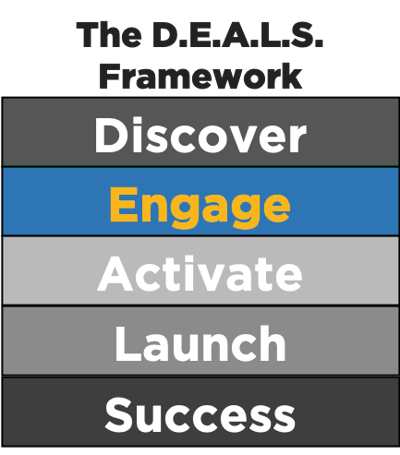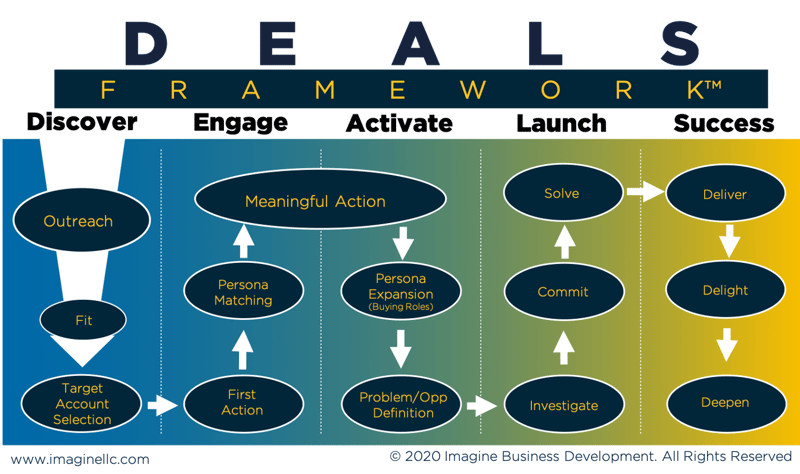 Without awareness, there is no demand. Without demand, there is no potential for a sale, and without sales, there is no business. And if the business doesn’t exist, your job as a marketer doesn’t exist either. That only means one thing: you must always make sure there is awareness around the company. Easy, right?
Without awareness, there is no demand. Without demand, there is no potential for a sale, and without sales, there is no business. And if the business doesn’t exist, your job as a marketer doesn’t exist either. That only means one thing: you must always make sure there is awareness around the company. Easy, right?
Well, maybe.
Generating awareness and getting the right people to take the steps you want toward a sale can be a lot more difficult than you would think. Especially now in a world where there’s more noise than ever, getting a prospect to take a first action (meaning they are aware of your business, product or service) can be quite the challenge. Figuring out what actions you can take as a marketer can be cumbersome if you don’t know where to start, but luckily for you, we have you covered.
What is a First Action?
 First Action is a concept that represents that first waypoint in the engage phase of The DEALS Framework. Its specific definition should be customized to your situation. If you’re looking for a good starting point, we recommend any engagement action taken by a contact within a target account within the previous 91 days (one quarter).
First Action is a concept that represents that first waypoint in the engage phase of The DEALS Framework. Its specific definition should be customized to your situation. If you’re looking for a good starting point, we recommend any engagement action taken by a contact within a target account within the previous 91 days (one quarter).
What’s considered a first action? Here’s a list to get you started:
- Responding to an email (with something other than “never contact me again”)
- Visiting a webpage
- Clicking a link in an email
- Talking to a sales rep
- A social share
These aren’t the only first actions someone can take. There are many others that you can define for your business, but we recommend keeping the bar fairly low and making sure it can be a confirmable action.
The second thing you’re probably wondering is, “Why 91 days?” Putting a time-frame or a cut off time on the measurement will help you determine who has taken an action most recently. Those are the people that are the freshest to your site and are more likely to come back and interact with your content again. This number can change, depending on your business and how far back an interaction can go and still be considered “fresh” by your standards. It might be 120 days or even 180 days; just make sure you pick something that works for your business.
Why You Should Pay Attention to First Action
Generating a first action truly kicks off your target accounts’ path through The DEALS Framework. The work leading up to a first action is all discovery. All the actions in discovery are you figuring out who your target accounts are (aka, who you want to focus on). First action is the first place where your target accounts get to interact with you, your company, and what you have to offer.
Having a blockage at first action can cause a lot of issues. If you have a lot of target accounts and contacts identified that you’d like to take a first action and are discovering that none of them are taking that step, how are you going to stay in business? Let that sink in.

As I previously mentioned, a first action is the initial time a target account/prospect interacts with you. That’s important because this is the time where they decide if they want to pay any attention to your business. And while you know that they should pay attention to you, they don’t. That’s why it’s important to make sure their first action is something simple. Too often companies shoot for a high first-action milestone, which drives their prospects away. It’s our job as marketers to ensure these target accounts don’t get so overwhelmed that they don’t continue their journey through The DEALS Framework.
Examples to Generate First Action
We’ve identified that there is a primary barrier when it comes to creating engagement before there’s an identified need or consideration. This barrier is generating first action. To help you avoid your target accounts getting stuck at first action, here are 5 examples of actions you can take so you can begin generating first actions for your company.
1. Find out where your target account contacts spend their time online and be in those locations. When it comes to social media platforms, join in the conversations your contacts are having. On Twitter, you could interact with the same Twitter chats, and on LinkedIn you could be a member of the same groups they are in. You could even find out what social media influencers they follow and connect with those people to have them promote your content. If you know your target account contacts listen to a specific podcast or read a certain blog, see if you can be booked as a guest.
Just about every person is online and on social media, so why wouldn’t you want to be where they are? And let me be clear, Twitter and LinkedIn aren’t the only social platforms you have to utilize; those are just the ones we focus on. That’s why it’s important to research the right platforms so your engagement efforts aren’t wasted. It’s another chance for your business to connect with those who would benefit from your product/service offered. We all know social media is a great way to get connected, but it takes some effort to get results By interacting with your target contacts online, there’s a higher chance they will click on a link that goes to your webpage or even share your content on their profile.
2. Send content specifically to your target accounts. There are a few ways you can do this. You can include the list of contacts in your next newsletter. Don’t be discouraged if everything doesn’t go smoothly, though. Because you’re trying to generate a first action, your target account contacts don’t know who you are and your email may be subject to bouncing, unsubscribing, or even the dreaded spam folder.
To get around this issue, you could also create a newsletter or introductory email specifically for those contacts to dip their toe into what your company has to offer. If you decide to go this route, make sure you include interesting content your target will want to click on.Even if you don’t do the research, looking at what your playbook says about your ideal client profiles (ICPs) can help you with choosing content, too.
3. Targeted paid ads/search. This action would be beneficial to those companies that are already doing paid ads or are looking for a reason to start. You’d have to do some research on relevant keywords and possibly locations to get your company to show up in your target account’s search results. But if you can do this correctly, you’ll be in a better position to gain more first actions.
When it comes to choosing what exactly to promote, that all depends on what your target accounts will find useful. Start by taking a look at the pages on your site that generate the most traffic and see if you can leverage one of those pages to appear in their search results. Remember, whatever you choose has to correlate with the keywords you picked out, otherwise they won’t find value in your ad and won’t click it.
4. SEO Optimization. This is pretty much like targeted ads and search, just without paying to be at the top. Similar to the targeted ads and search strategy, you should compile a list of relevant keywords and then optimize for them. This can be a challenge depending on what industry you’re in and who you’re trying to target, but it can be done. If you can rank high enough, there’s a better chance your target accounts will take a first action and come to your site.
5. Work with your company’s sales team to get in contact with your target accounts. Who says you can’t work with your sales reps? Talking to a sales rep is classified as a first action, so collaborate with them to create a play targeting your prospects. As long as the target account contact being called doesn’t just deny the rep and hang up, you’ll be successful with generating first action. And for those who do deny the rep, you will at least know to take them off of your target account list. You’ll never know what impact making a phone call could have on your target accounts if no one picks up a phone and calls.
There are many other actions you can take as a marketer to generate a first action from your target account contacts. It all depends on what industry you’re in and where those contacts spend their time. You and your sales team have numerous possibilities, but if you’re overwhelmed or pressed for time, the points we’ve laid out are a good starting place.
Learn to obsess over generating first action because you only have one chance to make a great first impression. Find ways to get your target contacts interested in what you have to offer so they keep coming back for more. That’s the first step to getting them through the rest of the framework to buy your product. It’s on you as a marketer to make that happen.


